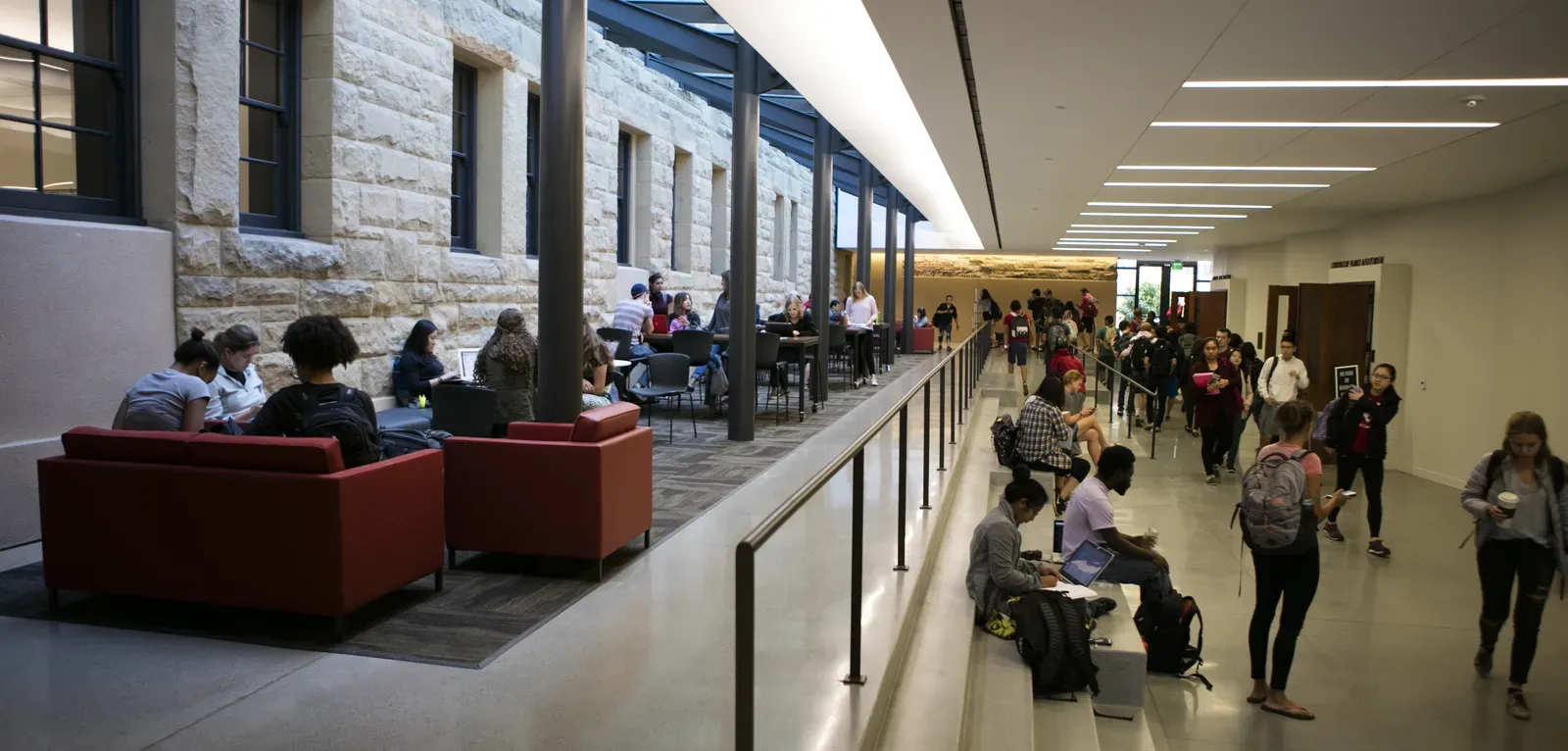
Transform Science Education and Research
A New Science Quad
Stanford’s new science quad sets the standard for interdisciplinary research and teaching at the intersection of the physical and life sciences. Biology, chemistry, engineering, and medicine are linked more closely than ever, allowing researchers to develop new solutions to complex challenges such as human disease and climate change. Venues designed for collaboration have the potential to revolutionize the sciences at the university.
The science quad is framed by the Sapp Center for Science Teaching and Learning and The Anne T. and Robert M. Bass Biology Research Building, which opened in 2018. The William M. Keck Science Building, the Lorry I. Lokey Laboratory for Chemical Biology, and the Charles H. Gilbert Biological Sciences Building also form parts of the completed quad.
The William Gates Building for Computer Science serves as a gateway to the Science and Engineering Quad. There are connections to the Institute for Chemistry, Engineering & Medicine for Human Health (ChEM-H), and the Stanford Neurosciences Institute, which will be housed in a new building nearby.
Flanked by the arts district, the Science and Engineering Quad, and the School of Medicine, the science quad reinforces Stanford’s position as a global leader in interdisciplinary education and research.
Giving Opportunities: New Science Quad (PDF)
Anne T. and Robert M. Bass Biology Research Building
The Anne T. and Robert M. Bass Biology Research Building supports the biology department’s ambition to continue conducting leading foundational research, develop innovative partnerships, and train the best scientists. Working with chemists, mathematicians, engineers, medical researchers, and computer scientists, biologists are finding new ways to tackle global challenges.
The five-story building is divided into wet labs for hands-on research, computational or "dry" labs, and hybrid research spaces. Scientists currently divided across five buildings have been brought together under one roof for the first time, with labs placed in a logical sequence that encourages collaboration and discovery. Bass Biology provides laboratory space for half of the biology department's faculty and staff, as well as 300 graduate students and postdoctoral fellows.
Giving Opportunities: Anne T. and Robert M. Bass Biology Research Building (PDF)
Sapp Center for Science Teaching and Learning
The opening of the Sapp Center for Science Teaching and Learning in 2016 launched a new era of science education at Stanford. This iconic building, previously known as “Old Chem,” has been thoroughly reimagined to reflect the Sapp family’s philosophy of interdisciplinary education based on collaborative learning and an open exchange of ideas.
The 60,000-square-foot Sapp Center is a state-of-the-art facility that allows Stanford faculty to follow the latest and best practices in the teaching of science. Its classrooms are fully equipped for hands-on work in both chemistry and biology. Up to 4,000 undergraduate students use the center every day, taking courses not only in the natural sciences but also in other fields, such as art, history, statistics, and economics, among others. Designed with flexibility in mind, the Sapp Center will support innovative teaching for decades to come.
Giving Opportunities: The Sapp Center for Science Teaching and Learning (PDF)